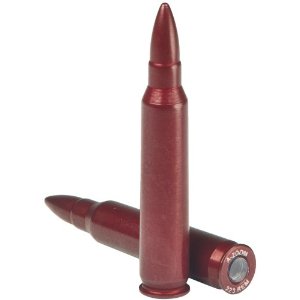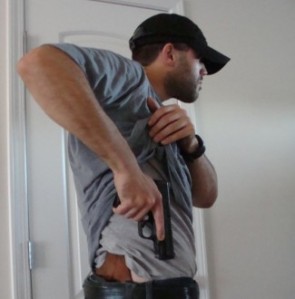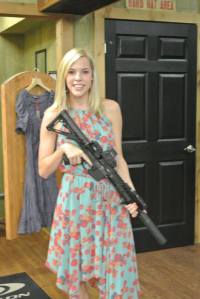Reaching goals and finishing the work that we had originally organized for ourselves are all marvelous accomplishments. But regular practice matters too, and even when it seems to fall into redundancy and repetitive boredom. The art of regular practice also brings its future rewards and adds a nice structure to our lives.
Within the martial arts of guns, one great practice represents the use of snap caps. They are hard polymer plastic, bullet lookalikes, and they are often of burgundy red color. Gun stores usually sell them in all pistol, shotgun and rifle gauges: from .22 rounds to .45 rounds, from 10 gauge to 30 gauge, and from .17 rounds to .308 rounds.
In the Wild West Days of the States, about a hundred and forty years ago, cowboys, farmers, ranchers, soldiers, warriors, outlaws, bandidos, circus performers, cooks, miners, sheriffs, posses, and all sorts of other types, regularly practiced their dry firing techniques in order to become proficient shooters. They practiced their stances, draw, reach, deholstering, aim, sights, breath, trigger squeeze and holstering their weapons. They didn’t have snap caps in those days, so they had to dry fire without live ammo, or they used live ammo out in the desert, which could get expensive.
The problem with dry firing weapons like the Colt Six Gun Shooter and the Winchester Lever Action Repeating Rifle was that dry firing eventually dulled the firing pin and the trigger mechanism. The hard metal on metal hits, and without any live ammo to give some type of cushion, weakened the weapons’ performance. Imagine going into real combat with some real live ammo – and not having your weapon work properly. This was one of the real and terrible fears of gunslingers back in those days.
Live firing with snap caps is a safe and effective technique for acquiring the martial arts of firearm use.
Now we shooters are lucky in that snap caps allow us to practice in our homes without worrying about severe noise or destroying our weapons through dry firing without anything between the firing pin and the trigger mechanism or bolt-action area. The snap cap has the same shape of the real bullet, except it doesn’t explode and it is perfect for receiving the force of the firing mechanism.
These days, visiting the live fire gun range is expensive, unless you have access to someone’s land for shooting or live near a free use shooting range. But even the amount of ammo normally used in one day of shooting is not cheap. Many shooters go through hundreds of rounds, firing most of their weapons, such as rifles, shotguns and pistols.
The dry firing technique at home with snap caps allows the shooter the ability to practice in private and not have to spend a great deal of money during one day of live fire. Nothing beats the actual practice and skill building of live firing however. But snap caps allow that reinforcement of good skills, which can eventually help produce a good shooting day at the range.
At home, I often practice with snap caps in particular situations. For example, I will use snap caps for dealing with potential jams, malfunctions or stovepipes in my weapons, then practicing safety drills, clearing the jams, and return firing.
I use the snap caps for stance, holstering, drawing the weapons, sight alignment, aim, breathing, proper trigger squeezing and holstering my weapon once again. I will often practice shooting the weapon with one hand, and then with two hands. With my pistols, I like to switch back and forth between left and right hands. Sometimes, while I was live firing, I have heeled, anticipated or flinched when shooting my weapons. I use the dry firing of snap caps to help correct such bad shooting habits.
At home, I also practice imaginary self-defense scenarios, where I move out of cover and try shooting back at a target, or reaching for a weapon nearby when doing another task, such as Internet surfing, and then facing a serious threat, and immediately afterwards, returning quick succession of dry fire. Dry firing with snap caps is not that loud, except for the movement of bolt metal in the chamber. I still use ear plugs with my dry fire practice however.
Snap caps are very simple to use because the shooter simply loads the snap caps like normal live bullets into the chamber or magazine. The racking and ejecting of the snap caps is often the same as live firing with brass, steel and shotgun casings. Instead of a used casing flying out, the snap cap ejects completely.
Before going to your weapons for dry firing snap caps, use the safety protocols. The number one protocol is to check the weapon for any live cartridges in the chambers and in the magazines. I like to leave green zip ties in the chamber-bore area after doing a dry firing round.
The main safety concerns with snap caps refer to keeping the caps in a completely separate place from the live ammo. All live ammo should have its special place for storage in your private abode. Nothing could be worse than to have your snap caps lying around near the live ammo, and then mistakenly loading a live cartridge or cartridges with the snap caps.
The sound and damage of a live round going off in your home could ruin your life forever. These terrible negligent discharges do happen. Keep all snap caps in a particular site for regular dry firing practice. Store the live ammo in a completely different area of your house.
The other safety concern is just getting finger tired, bored or lazy. After dry firing repeatedly, the mind can start to lose its awareness. This is the time to stop the snap cap practice and return to it for another day.
With the amount of money spent driving out to the range and going through lots of ammunition, the dry firing of snap caps allows gun owners to practice the martial arts of firearms within a place of residence.





